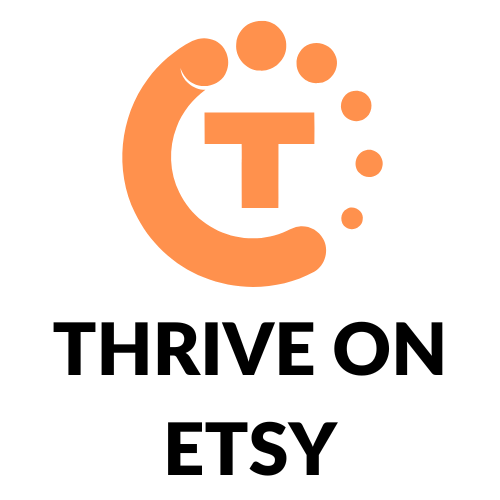Running Facebook ads on Etsy is an effective way to reach a wider audience and increase sales. Etsy sellers can use Facebook ads to promote their products, drive traffic to their Etsy shop, and build brand awareness.
But, setting up and managing a Facebook ad campaign can be a daunting task for those who are unfamiliar with the process.
Follow our best practices for Facebook advertising in order to maximize the impact of your Facebook ads and ultimately drive more traffic and sales to your Etsy shop!
Setting up a Facebook Ads Account

Before you can start running Facebook ads for your Etsy shop, you need to create a Facebook Business Manager account and link it to your Etsy shop. This allows you to manage your ads and track their performance from one central location. Here are the steps:
Creating a Facebook Business Manager account
To create a Facebook Business Manager account:
- Go to business.facebook.com and click Create Account.
- Follow the prompts to enter your business information, including your business name and email address.
- Once you’ve created your account, you’ll be taken to your Business Manager dashboard.
Linking Your Etsy Shop to Your Facebook Business Manager Account
Once you’ve created your Facebook Business Manager account, you need to link your Etsy shop to it. Here’s how:
- Go to your Business Manager dashboard and click Business Settings.
- Click on Accounts, then click on the Ad Accounts tab.
- Click Add New Ad Account and follow the prompts to enter your Etsy shop name and website URL.
- Once you’ve added your Etsy shop as an ad account, you’ll be able to create and manage Facebook ads for your Etsy shop.
By following these steps, you can set up a Facebook Ads account and link it to your Etsy shop. This will allow you to create and manage Facebook ads to promote your Etsy shop and increase your sales.
Creating Your Facebook Ad Campaign

Creating a Facebook Ad Campaign for your Etsy shop is a great way to reach a wider audience and increase your sales. Here are the steps to create your Facebook Ad Campaign:
Choosing the Right Objective for Your Ad Campaign
The first step in creating your Facebook Ad Campaign is to choose the right objective. Your objective should align with your overall marketing goals. Facebook offers a range of objectives, including brand awareness, traffic, conversions, and more. Choose the objective that best fits your marketing goals.
Defining Your Target Audience
Defining your target audience is crucial for the success of your Facebook Ad Campaign. You can define your target audience based on factors such as age, gender, location, interests, and behavior. The more specific your target audience is, the more likely your ad will be seen by the right people.
Setting Your Ad Budget
Setting your ad budget is an important step in creating your Facebook Ad Campaign. You can set a daily or lifetime budget for your ad campaign. The amount you spend will depend on factors such as your marketing goals, target audience, and competition. It is recommended to start with a small budget and increase it as you see positive results.
Creating Your Ad Content
The content of your ad is crucial for its success. You should create eye-catching visuals and write compelling copy that will grab the attention of your target audience. Make sure your ad content aligns with your marketing goals and is relevant to your target audience.
Placing Your Ad Order
Once you have defined your target audience, set your ad budget, and created your ad content, it’s time to place your ad order. You can place your ad order through Facebook’s Ad Manager. Choose the ad objective, target audience, ad budget, and ad content, and then place your order. Your ad will then be reviewed by Facebook before it goes live.
Monitoring and Optimizing Your Ad Campaign

After launching your Facebook ad campaign on Etsy, it is important to monitor and optimize its performance regularly. Here are some sub-sections to help you track, adjust, and test your ad campaign:
Tracking Your Ad Performance
To track your ad performance, you can use Facebook’s Ads Manager. It provides detailed insights into your ad’s reach, engagement, and conversion rates. You can analyze these metrics to see how your ad is performing and identify areas for improvement.
Another way to track your ad performance is by using conversion tracking. This feature allows you to see how many people clicked on your ad and completed a purchase on Etsy. You can use this information to measure your return on investment (ROI) and adjust your ad budget accordingly.
Adjusting Your Ad Campaign Settings
If you notice that your ad is not performing well, you can adjust your ad campaign settings. For example, you can change your ad targeting, budget, or bidding strategy. You can also experiment with different ad formats, such as video or carousel ads, to see which ones perform best.
It is important to make these adjustments gradually and track their impact on your ad performance. This will help you avoid making drastic changes that could negatively impact your ad’s effectiveness.
Testing and Tweaking Your Ad Content
Another way to optimize your ad campaign is by testing and tweaking your ad content. This involves creating multiple versions of your ad and testing them to see which ones perform best.
You can test different ad headlines, images, and calls-to-action to see which ones resonate with your target audience. You can also experiment with different ad placements, such as Instagram or Audience Network, to see which ones generate the most engagement.
By testing and tweaking your ad content, you can improve your ad’s effectiveness over time and maximize your ROI.
Conclusion
Running Facebook ads on Etsy can be a powerful way to increase visibility and sales for your shop. By creating compelling content, targeting the right audience, and using the right ad formats, you can reach potential customers and drive traffic to your shop.
Remember to test different types of content and ad formats to see what works best for your shop. Don’t be afraid to experiment and try new things. And always track your results to see what’s working and what’s not.

